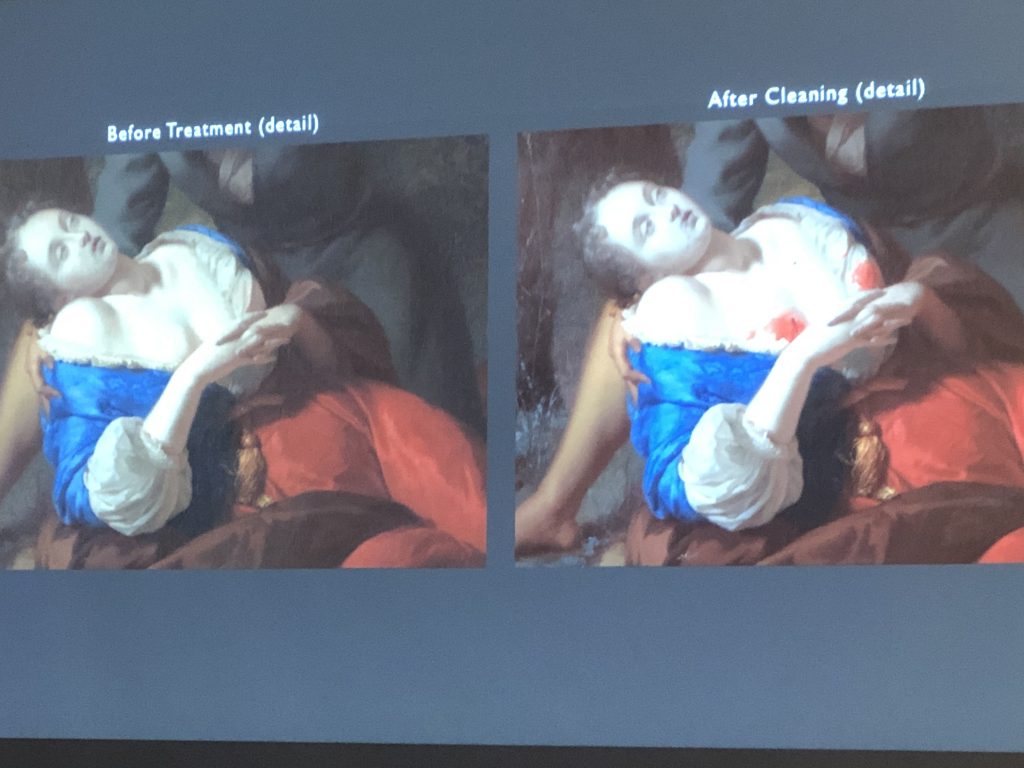Summarized by Morgan Burgess
“A Strange Event in the Life of Godfried Schalcken’s Cephalus and Procris”
Gerrit Albertson
Gerrit Albertson presents on a project which was treated in anticipation of the Metropolitan Museum of Art’s exhibition “In Praise of Painting: Dutch Masterpieces at The Met” (this piece is not currently on display). His project is aptly named as the artist, Godfried Schalcken, was the subject of a story written in 1839 by Irish horror novelist, Sheridan Le Fanu, titled “Strange Event in the Life of Schalken the Painter” and in his treatment, Gerrit uncovered a “strange event” in the life of Schalcken’s painting.
In beginning his examination of the painting, Albertson first looked to the history of, Godfried Schalcken. Schalcken was educated in Latin and that influence is reflected in several of his works. The subject of this painting is the myth of Cephalus and Procris, taken from Ovid’s Metamorphoses, which centers on the marriage and demise of the couple; after a turbulent beginning to their marriage, Procris believes that Cephalus has gone into the forest not to hunt, but to woo a lover. She follows him into the forest to see for herself. Upon hearing rustling in a nearby brush, Cephalus throws his spear believing it to be an animal and hits Procris. The painting shows Cephalus, distraught, holding the dying Procris. Schalcken is known for his nocturnal scenes and use of light (specifically candlelight) to create intense and very intentional illumination and shadows. In the painting Cephalus and Procris, we see the two figures surrounded by a dark forest with a distant hillside and blue sky, which acts as a kind of portal for light as it creates distinct shimmering highlights on foliage in the background.
Albertson used UV-induced visible fluorescence, MA-XRF, and a microscopic examination of the surface, non- invasive non-destructive techniques, to analyze the painting and assess its condition prior to beginning any treatment. The examination revealed a layer(s) of old varnish which was pigmented to enhance the patina. While removing the varnish layer, Albertson discovered that there were very particular areas of the painting which were strategically overpainted. The scene had looked like a very modest portrayal of a rather brutal scene despite the spear showing blood, when Albertson found that in fact, Schalcken’s original scene depicted Procris’ wound, blood spatter, and drool dripping from her mouth as she lay dying.

Digging into the painting’s history uncovered the likely source and time that this over painting would have been done. Cephalus and Procris was formerly housed in the Temple -Newsam estate in Leeds, England. A lady of the house had a habit of covering (or hiring artists to cover) “distasteful” imagery including violence and scantily clad figures. The wound and bright red blood spatter certainly evoke the violence of the scene. Through his research and treatment, Gerrit Albertson takes us back to the artist’s original intent, all the while thoroughly documenting a “strange event” in the painting’s history.